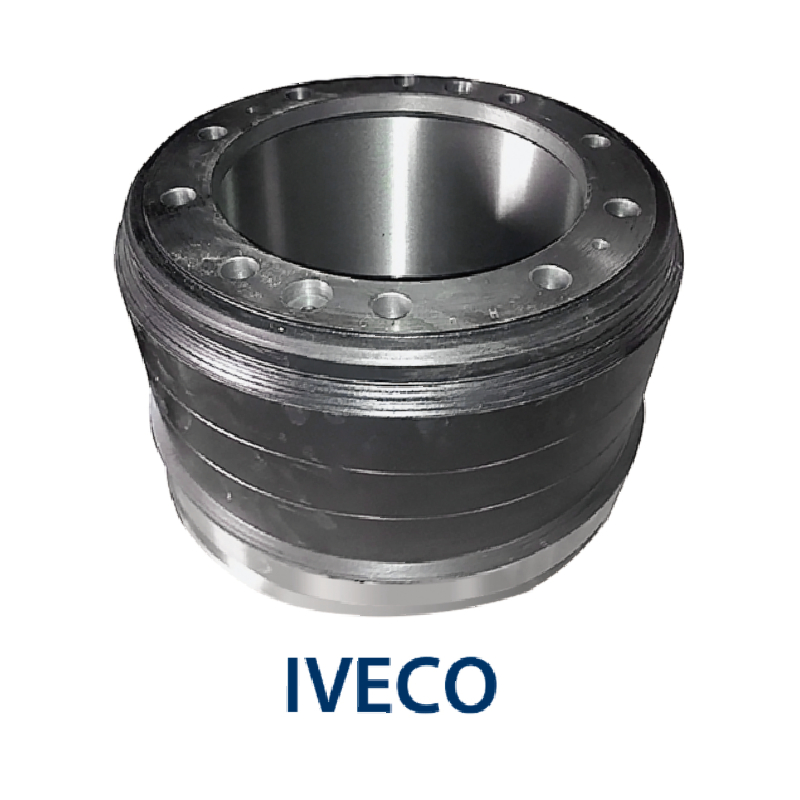Nov . 25, 2024 13:38 Back to list
Understanding the Brake Drum Production Process and Its Key Steps
The Brake Drum Manufacturing Process An Overview
Brake drums are crucial components in the braking systems of many vehicles, providing the friction necessary to slow down or stop the wheels from turning. Understanding the manufacturing process of brake drums is essential for anyone interested in automotive engineering, manufacturing, or aftermarket parts supply. This article delves into the various stages of the brake drum manufacturing process, highlighting the materials used, techniques employed, and quality control measures taken to ensure high-performance products.
Raw Materials
The primary material used in the production of brake drums is cast iron, known for its excellent thermal conductivity and wear resistance. Cast iron can withstand the high temperatures generated during braking, making it an ideal choice. In some cases, manufacturers may also utilize composite materials or specific alloys to improve performance and reduce weight. The choice of material directly affects the durability, efficiency, and overall performance of the brake drum.
Design and Engineering
Before the manufacturing process begins, engineers design the brake drum using Computer-Aided Design (CAD) software. The design phase is critical as it determines the drum's dimensions, weight distribution, and aesthetic appeal. Simulation tools are often employed to predict how the drum will perform under various conditions, which helps engineers optimize the design for strength, weight, and cost-effectiveness.
Sand Casting Process
The most common method for manufacturing brake drums is sand casting. This process begins with creating a mold made of steel or other durable materials. The initial step involves designing the mold based on the approved CAD drawings. Once the mold is prepared, fine silica sand mixed with a binder is packed around the mold to create a negative impression of the drum.
After the mold has been formed, the sand is removed, leaving a cavity in the shape of the brake drum. The next step involves pouring molten cast iron into this mold. The molten metal flows into every crevice, taking on the shape of the mold. Once the iron cools and solidifies, the sand mold is broken apart to reveal the cast brake drum. This method is favored for its ability to produce complex shapes with high precision.
Machining and Finishing
brake drum manufacturing process

Once the raw brake drum has been cast, it undergoes a series of machining operations to achieve the final dimensions and surface finish. Using CNC (Computer Numerical Control) machines, manufacturers mill, grind, and drill the drum to ensure that all surfaces are smooth and accurately shaped. Key dimensions such as the inner diameter, outer diameter, and mounting surfaces are carefully checked and refined to meet stringent specifications.
After machining, the brake drums may receive additional surface treatments, such as shot peening, to enhance their fatigue resistance. This process involves blasting the surface of the drum with small steel balls, which compress the surface and improve its strength. Additionally, drums may undergo heat treatment to further enhance their mechanical properties and wear resistance.
Quality Control
Quality control is an integral part of the brake drum manufacturing process. Throughout all manufacturing stages, strict quality checks are performed. Random samples of brake drums are subjected to various tests, including dimensional inspections, hardness tests, and fatigue testing. These measures ensure that the drums meet safety standards and performance expectations.
Moreover, manufacturers often adhere to guidelines set by automotive regulatory bodies, such as the Society of Automotive Engineers (SAE) and the American National Standards Institute (ANSI). Compliance with these standards is critical for ensuring the reliability and safety of the brake drums in vehicles.
Final Assembly and Distribution
Once the brake drums pass quality control checks, they are cleaned and prepared for installation. This may involve applying protective coatings to prevent corrosion. The finished products are then packaged and distributed to automotive manufacturers, repair shops, or directly to consumers, completing the manufacturing process.
Conclusion
The manufacturing of brake drums is a complex process that combines advanced engineering, state-of-the-art production techniques, and rigorous quality control. Understanding this process not only sheds light on how crucial these components are to vehicle safety but also emphasizes the innovation and precision required in modern automotive manufacturing. As vehicles evolve, manufacturers continue to refine their processes to deliver brake drums that meet the ever-increasing demands for performance and sustainability.
-
HINO Industrial Solutions - ¡Ң���ຽ��е��������˾ | Advanced Technology&Reliability
NewsJul.13,2025
-
HINO Industrial Efficiency-Jiangsu Hino Industrial|Productivity Optimization&Cost Reduction
NewsJul.12,2025
-
HINO-¡Ң���ຽ��е��������˾|Advanced Industrial Solutions&Energy Efficiency
NewsJul.12,2025
-
Premium Brake Drum Iveco – Durable Drum Brake Drum & Brake Shoe Solutions
NewsJul.08,2025
-
High-Performance Brake Drum Liza for Enhanced Safety Reliable Drum Brake Drum & Brake Shoe Solutions
NewsJul.08,2025
-
High-Quality Brake Drum MAZ – Durable Drum Brake Drum & Brake Drum and Brake Shoe for Optimal Performance
NewsJul.07,2025
